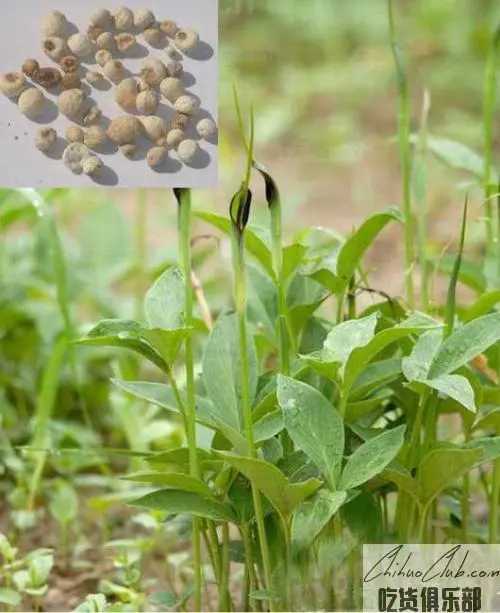
Tang Pinellia ternata
-
Update date::
-
Date of protection::
-
Protected range:The protection scope of the geographical indication products of the Tang Dynasty in the Tang Dynasty is based on the scope proposed by the Tanghe County People's Government of Henan Province on the definition of the scope of protection of geographical indication products in the Tang Dynasty (Tang Zheng [2005] No. 66), which is the administrative jurisdiction of Tanghe County, Henan Province.
-
Related origin:henan nanyangshi tanghexian tanghexian-bidianzhen tanghexian-binhejiedao tanghexian-cangtaizhen tanghexian-chengjiaoxiang tanghexian-dahetunzhen tanghexian-dongwangjixiang tanghexian-dongxingjiedao tanghexian-guchengxiang tanghexian-guotanzhen tanghexian-heilongzhen tanghexian-huyangzhen tanghexian-longtanzhen tanghexian-mazhenfuzhen tanghexian-qiyizhen tanghexian-shangtunzhen tanghexian-shaobaisizhen tanghexian-sizhoujiedao tanghexian-tonghexiang tanghexian-tongzhaipuzhen tanghexian-wenfengjiedao tanghexian-xingtangjiedao tanghexian-yuantanzhen tanghexian-zangangxiang tanghexian-zhangdianzhen
-
Category:
Tang Banxia, commonly known as medicine dog egg, is an ancient name for the variety of authentic medicinal materials produced under the specific human and geographical conditions of Tanghe. Pinellia is a perennial herb of the genus Araceae. The mid-summer of the Tang Dynasty is a perennial herb of the genus Araceae, which has the effects of dampness, phlegm, phlegm and phlegm, and eliminates phlegm and stasis. It mainly treats genital warts, chills, vomiting, chest, chest, and plum qi.
Tang Pinyin quality technical requirements (a) species name. Pinellia. (2) Cultivation techniques. 1. Growing environment: wild or semi-wild environment, 80m to 200m above sea level, Shajiang black soil and yellow brown loam, deep soil layer, fertile soil, Ph value 6.5 to 7.5, soil organic matter content 0.69% to 1.49%. 2. Seed collection: The cultivars of the Tangxia summer must be harvested from the wild species and the breeding bases within the scope of protection of geographical indication products, and no other varieties are introduced. In June and October, tubers and bead buds were collected, and the soil was removed. Or harvest berry seeds, dry and store for future use. 3. Seed selection and sowing: Bead bud species: 0.3cm to 1cm in diameter, 20kg to 35kg per acre. The row spacing is 3×15 cm and the sowing depth is 3 cm. Two years of harvest. Tuber species: 0.7cm to 2cm in diameter, 40kg to 65kg per acre. The row spacing is 3×20 cm, and the sowing depth is 4 cm to 5 cm. A year of harvest. Bead buds and tuber seeds are soaked and germinated before sowing. Soak the seeds for 1 hour, remove them and place them on a hotbed (22 ° C to 24 ° C), place 40 cm to 50 cm per square meter, cover the grass to moisturize, and sown when the buds are white. Berry species: The seeds are soaked in warm water at 20 ° C for 1 hour, and placed on a hot bed (15 ° C to 25 ° C) to germination until the seeds are white. Soaked in impotence, the width is 1.35m. The line spacing is 15cm, and the seeding amount per mu is 0.5cm. Three years of harvest. (3) Harvesting and processing. 1. Harvest: The mid-late June and the mid-late October are the mature harvest periods of the Tang Dynasty. Harvesting method: use the shovel to plant the ridge shovel and dig the soil, and turn the soil to a depth of 10cm. Tubers with a diameter of 1cm or more can be used for processing medicinal materials. Small tubers and bead buds can be detected for storage, or they can be left in the mining trench to avoid further planting in the next season. 2. Processing: Put the harvested tubers into a container, add water to wash the soil, put them into a woven bag, put them on the stone plate and dip them with water. When more than 90% peel off to white, pick out the unpeeled Drain the skin residue and put it on the mat for exposure or fire drying. (4) Quality characteristics. 1. Sensory characteristics: The appearance is spherical or semi-circular, with a diameter of 0.8cm to 2cm, the surface is white, and there are pit marks on the center of the upper part. The surrounding is densely covered with pit marks, and the bottom is round and smooth. The texture is firm and dense, the longitudinal section is kidney-shaped, white, the powder smells sniffing nose, the taste is spicy, the chewing is sticky, the tongue is thorny. Large, soft, white, hard, and powdery. 2. Physical and chemical indicators: moisture content ≤ 14%, pesticide residues are lower than the national standard for Chinese herbal medicines GAP.
Apply to:
Producers within the scope of protection of geographical indication products in the Tang Dynasty may submit an application to the Nanyang Entry-Exit Inspection and Quarantine Bureau for the use of the “Special Mark for Geographical Indication Products”, which shall be approved by the General Administration of Quality Supervision, Inspection and Quarantine.